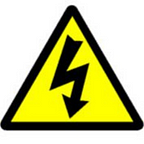5 Differences Between IEC 61111 and ASTM D178 Electrical Rubber Mats
Are you stuck in a maze while choosing the right electrical insulation mat standard for you?
Wondering what sets IEC 61111 and ASTM D178 apart from each other?
This blog dives deep into the differences between IEC 61111 and ASTM D178 electrical mats. It explores how they are different in the metric of their physical properties, chemical, and other properties, classes, and geographic regions following these standards, and the recommended thickness meant for each of them. This helps provide detailed insights for choosing the right rubber mat according to your geographical standards.
The importance of insulation mats in electrical safety is huge as they act as antishock mats and help reduce electrical hazards by providing safety insulation. These insulating mats are extensively used as rubber matting in an electrical switch room, insulating rubber mats for electrical equipment, safety rubber mats for electrical panels, and electrical insulation matting solutions for a wide range of industries.
Watch this video — Ultimate Guide To Duratuf IEC 61111 Insulating Mats
The first and foremost question that might bug your head is that-
What exactly are IEC 61111 and ASTM D178?
The IEC 61111 electrical rubber mats have their standard set by the International Electrotechnical Commission. ASTM D178 electrical insulation mats have their standard set by the American Society for Testing and Materials.
Although they have the same insulation properties, they may differ from each other in terms of various aspects.
5 Differences Between IEC 61111 and ASTM D178 Electrical rubber Mats!
1. Geographic region
The IEC 61111 Rubber Mat for Electrical Purpose is meant for application in areas following European standards. They are predominantly used in Europe and other regions. Whereas the ASTM D178 electric shock protection mats are primarily meant for application in the United States. They are used in geographical areas following American standards.
2. Classes
The IEC 61111 electrical rubber mats are classified as class 0, class 1, class 2, class 3, and class 4 based on the allowable working voltage. On the other hand, the ASTM D178 electrical insulation mats are categorized into types. The types vary from each other based on their chemical and resistance properties. Type 1 does not possess resistance against oil, ozone, and fire. Whereas type 2 is oil, ozone, and fire resistant.
3. Recommended thickness
The recommended thickness for IEC 61111 insulating rubber mats for electrical equipment is a minimum of 2 mm and a maximum of 4 mm (approximately). On the other hand, the recommended thickness for ASTM D178 safety mat ranges from a minimum thickness of 3.2 mm and a maximum thickness of 12.7 mm (approximately). However, in both the cases, the electrical insulating mat manufacturers should be thoroughly consulted.
4. Physical properties
The IEC 61111 electrical rubber mats have higher tensile strength compared to the ASTM D178 rubber mats.
Electrical insulation mats following the IEC 61111 standards have high elongation at break and hence can endure physical stress and wear to a great extent. However, the Rubber Mat for Electrical Purpose following the ASTM D178 standard have a medium range of elongation at break.
5. Chemical Resistance and other properties
Though electrical insulation mats of IEC 61111 standard and ASTM D 178 standard have medium alkali resistance, they possess different acid resistance. Insulation mats of IEC 61111 have high resistance against acids. These can be used as a rubber mat for electrical room. However, safety mats of ASTM D178 standard have low resistance against acids.
Must Read — Where are the Insulating Mats Used? Industry-Wise Applications
Rubber mat for electrical room following the IEC 61111 standard has high insulation resistance to water. Whereas those following the ASTM D178 standard have medium insulation resistance with water.
The IEC 61111 standard of insulation mat for electrical panel has high flame retardance. On the other side, the type 1 ASTM D178 insulation mat for electrical panel has low flame retardance and type 2 has high flame retardance.
Electrical rubber mats abiding by the IEC 61111 standard have high oil resistance. Though the type 2 ASTM D178 electrical insulation mats have high resistance against oil, the type 1 has low oil resistance.
What can happen if the right type of electrical insulation mat is not selected?
If the right type of electrical insulating mat is not selected then:
- Electrical safety hazards will occur due to the inefficiency of shock prevention of the safety mats.
- Rubber mat for electrical purpose will be subjected to damage and disintegration.
- Fire hazards might take place due to inefficient resistance against flame in conditions where short circuit, electrical overload, or leakage takes place.
Electrical insulation mats of both standards are made of a special rubber compound with exceptional insulating properties but they vary in properties. One is advised to consult a reliable insulating mat manufacturer before purchase.
